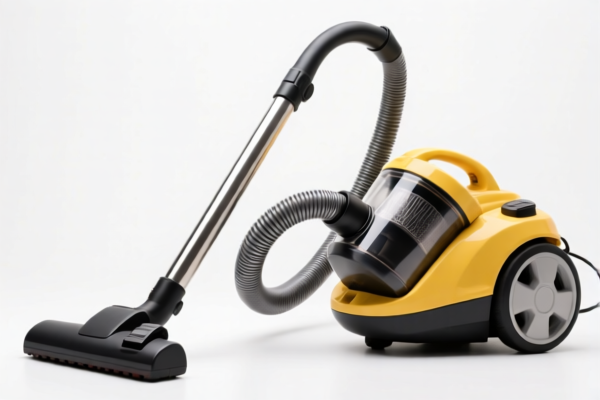| HS Code | Official Doc | Tariff Rate | Origin | Destination | Effective Date |
|---|---|---|---|---|---|
| 8508700000 | Doc | 80.0% | CN | US | 2025-05-12 |
| 8508600000 | Doc | 55.0% | CN | US | 2025-05-12 |
| 3926906010 | Doc | 59.2% | CN | US | 2025-05-12 |
| 3926909989 | Doc | 42.8% | CN | US | 2025-05-12 |
| 3901909000 | Doc | 61.5% | CN | US | 2025-05-12 |
| 3901905501 | Doc | 61.5% | CN | US | 2025-05-12 |




Vacuum Cleaner Head
A vacuum cleaner head, also known as a floor nozzle or attachment, is a critical component of a vacuum cleaner, responsible for directly collecting dirt, dust, and debris from surfaces. It is the part of the vacuum that makes physical contact with the area being cleaned.
Material
Vacuum cleaner heads are typically constructed from durable plastics – often polypropylene or ABS – for the main body. More robust models, particularly for commercial use, may incorporate metal components – stainless steel or aluminum – for increased durability and to withstand abrasive materials. Brush components are generally made of nylon, polypropylene bristles, or natural fibers. Seals and gaskets are commonly rubber or silicone to maintain suction.
Purpose
The primary purpose of a vacuum cleaner head is to efficiently gather and channel debris into the vacuum cleaner's airflow. Different head designs cater to specific cleaning tasks and surface types.
Function
The function of a vacuum cleaner head relies on several principles:
- Suction: The head creates a pathway for airflow from the vacuum cleaner, generating suction to lift dirt and dust.
- Agitation (in many types): Rotating brushes or oscillating mechanisms loosen embedded dirt and debris.
- Containment: The head's shape and seals prevent debris from escaping around the edges.
- Direction: The head directs the collected debris into the vacuum hose or wand.
Usage Scenarios
Vacuum cleaner heads are used in a wide variety of cleaning scenarios, including:
- Household cleaning: Carpets, hardwood floors, tiles, upholstery, and stairs.
- Automotive detailing: Cleaning car interiors, including carpets, seats, and crevices.
- Commercial cleaning: Offices, hotels, retail spaces, and other public areas.
- Specialized cleaning: Dust removal from electronics, cleaning pet hair, and reaching tight spaces.
Common Types
Several types of vacuum cleaner heads are available, each designed for specific cleaning needs:
- Floor Nozzles: General-purpose heads for carpets and hard floors. Often switchable between carpet and hard floor modes (brush roll on/off).
- Powerheads/Motorized Heads: Contain an independent motor to drive a brush roll, providing more aggressive agitation for deep carpet cleaning.
- Crevice Tools: Long, narrow attachments for cleaning tight spaces, corners, and edges.
- Upholstery Tools: Smaller heads with wider openings for cleaning furniture, curtains, and other fabrics.
- Pet Hair Tools: Designed with specialized brush rolls and suction to effectively remove pet hair from carpets, upholstery, and other surfaces. Often include rubber or felt strips to lift hair.
- Hard Floor Heads: Feature soft brush bristles or felt strips to avoid scratching delicate hard floor surfaces.
- Dusting Brushes: Soft-bristled heads for gently removing dust from delicate surfaces, electronics, and furniture.
- Rotary Brush Heads: Utilize a rotating brush to agitate and lift dirt from carpets and rugs.
- Turbo Heads: Powered by the airflow of the vacuum cleaner to drive a brush roll, offering a compromise between manual and motorized heads.
Based on the provided information, “vacuum cleaner head” can be classified under the following HS codes:
-
8508700000: This HS code covers “Vacuum cleaners; parts thereof: Parts”. This is a broad category encompassing components of vacuum cleaners, and a vacuum cleaner head would fall under this classification as a part. The basic tariff is 0.0%, with an additional tariff of 25.0%, increasing to 30% after April 2, 2025. For steel or aluminum products, the additional tariff is 25%. The total tariff rate is 80.0%.
-
8508600000: This HS code covers “Vacuum cleaners; parts thereof: Other vacuum cleaners”. While seemingly contradictory to the 'parts' category, it's possible a specific head design could be considered as a complete vacuum cleaner unit in itself. The basic tariff is 0.0%, with an additional tariff of 25.0%, increasing to 30% after April 2, 2025. The total tariff rate is 55.0%.
It is important to note that the final classification depends on the specific characteristics and construction of the vacuum cleaner head. If the head is made of plastic or other materials from headings 3901 to 3914, the following HS codes may also be relevant:
-
3926906010: This HS code covers “Other articles of plastics and articles of other materials of headings 3901 to 3914: Other: Belting and belts, for machinery: Other Synchronous belts”. If the vacuum cleaner head incorporates belts, this HS code might apply. The basic tariff is 4.2%, with an additional tariff of 25.0%, increasing to 30% after April 2, 2025. The total tariff rate is 59.2%.
-
3926909989: This HS code covers “Other articles of plastics and articles of other materials of headings 3901 to 3914: Other: Other”. This is a general category for plastic articles and could apply if the head is primarily made of plastic and doesn't fall into more specific categories. The basic tariff is 5.3%, with an additional tariff of 7.5%, increasing to 30% after April 2, 2025. The total tariff rate is 42.8%.
According to the provided reference material, the HS code options related to 'vacuum cleaner head' are limited, with only the following 4 found.
Customer Reviews
No reviews yet.